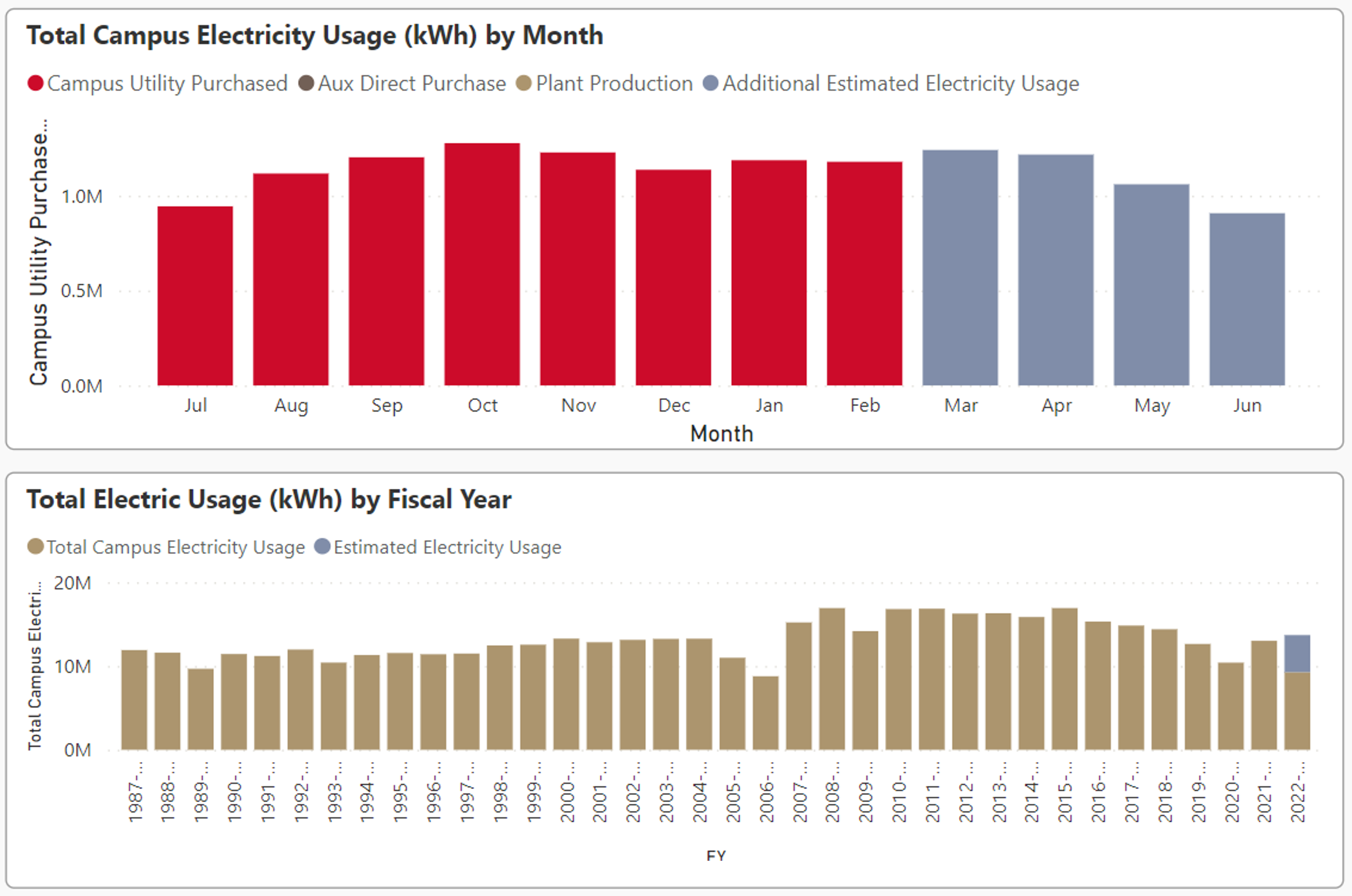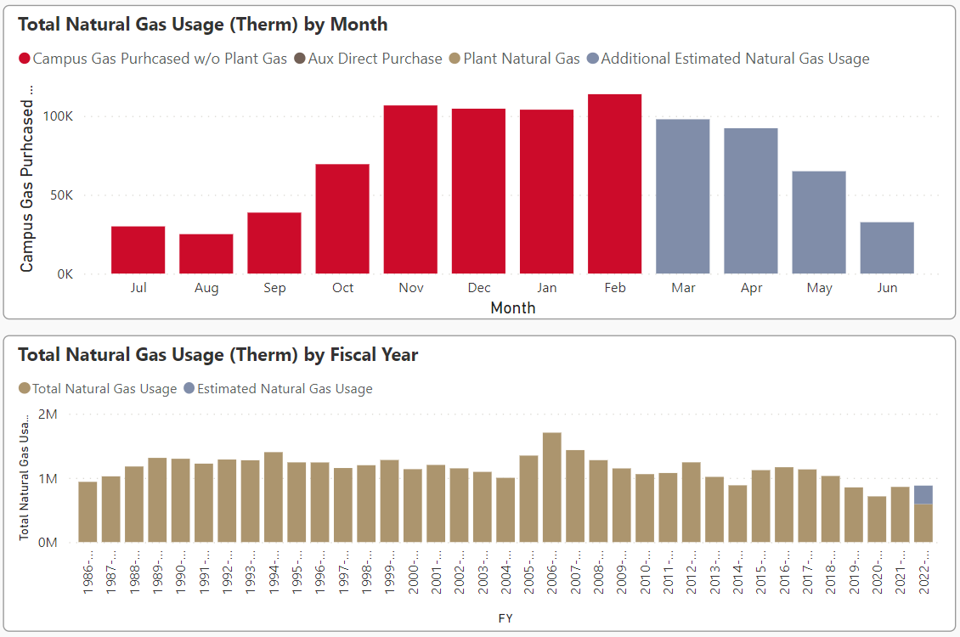Energy
Cal Poly Humboldt uses natural gas for heating air and water in its buildings, and electricity to power lights, computers, pumps, motors, and other equipment. In fiscal year 2021-2022, electricity comprised 33% of facility energy use; natural gas comprised 67% of facility energy use.
Electricity Usage (Fiscal Year 2022-2023 and Historical)

Natural Gas Usage (Fiscal Year 2022-2023 and Historical)

Source for charts: CSU Energy Dashboard
Energy Goals
- Pursue energy procurement and production to reduce energy capacity requirements from fossil fuels, enhance electrical demand flexibility, and promote energy resilience using available economically feasible technology for on-site renewable generation, microgrids, and other fossil fuel-free energy storage solutions (CSU Sustainability Policy).
- Transition from fossil-fuel sourced equipment to electric equipment as replacements or renovations are needed, and no new investment in, or renewal of, natural gas assets or infrastructure as part of campus projects starting July 1, 2035, with the exception of critical academic program needs (CSU Sustainability Policy).
- Operate buildings in the most energy efficient manner and transition to a low carbon strategy without endangering public health and safety and without diminishing the quality of education and the academic program (CSU Sustainability Policy).
- All new construction, remodeling, renovation, and repair projects will be designed with consideration of optimum energy utilization, decarbonization, and low life-cycle operating costs and shall exceed all applicable energy codes and regulations (Building Energy Efficiency Standards, Tit. 24 CCR § 6) by ten percent (CSU Sustainability Policy).
Status
The mild climate of the Humboldt Bay region has a direct impact on building energy consumption, as less artificial heating and cooling is required to maintain comfortable temperatures within campus buildings in comparison to regions with more extreme temperatures. Due in great part to the Covid-19 campus de-population protocol, Humboldt experienced a 22% decrease in energy consumption between 2019-20 and 2020-21 fiscal years. There was no significant decrease in energy consumption in 2022-23 compared to the previous year. The campus strives for continued reductions through ongoing lighting, HVAC and motor upgrades, as well as building envelope improvements and other installed efficiency measures.
Projects
- Two megawatts of solar photovoltaics (rooftop + carport) with battery storage - in progress
- Harry Griffith Hall fuel-switching project (replace natural gas boiler with electric heat pump) - in progress
- Telonicher Marine Lab LED lighting upgrade - Completed
- Allistair McCrone Hall LED lighting upgrade - Completed
- Streetlight LED upgrade (Facilities Management) - Completed
- Student Recreation Center (Field House) LED retrofit (Humboldt Energy Independence Fund) - Completed
- Fish hatchery pump motor upgrade (Humboldt Energy Independence Fund) - Completed
Next Steps
- Integrate a master utility plan into the campus physical plan
- Extend comprehensive metering to all existing and planned buildings
- Deliver 100% electric new construction and major building renovations
- Develop baseline and reduction targets for campuswide per-capita energy and water use
Learn More and Get Involved
- The CSU Energy Dashboard tracks and reports energy and water consumption across all 23 CSU campuses.
- The Humboldt Energy Independence Fund (HEIF) provides funding for student-inspired energy and resource conservation projects, hires student development teams and receives oversight by a committee of students, faculty and staff.
- Green Campus is comprised of paid and for-credit student interns implementing energy savings and sustainability campaigns
- Schatz Energy Research Center designs, demonstrates and deploys clean and renewable energy technologies. SERC offers student assistant, fellowship and docent programs
- Office of Sustainability includes an Energy Analyst/Planner responsible for campus energy tracking and development of energy efficiency projects
- The Virtual Green Office demonstrates how to set up your workspace
- Renewable Energy Student Union is a student club offering opportunities for hands-on learning in renewable energy systems.